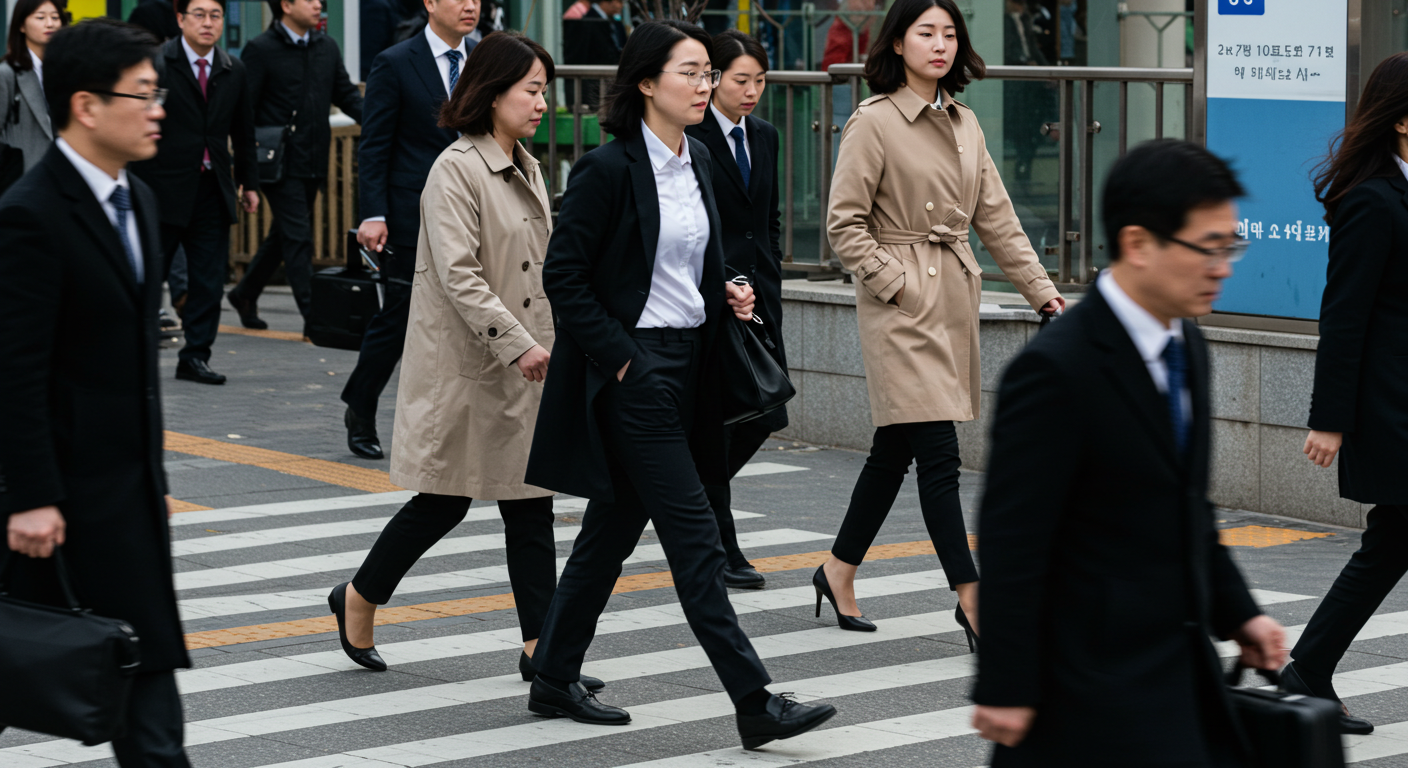First Impressions – “Why Is Everyone Dressed the Same?”
Korean Commuter Style as a Cultural Surprise
When my foreign friend first arrived in Korea, he was stunned by the sea of commuters on the subway. Men in gray or black suits with similar shoes, women in neat blouses and blazers. “Is there a dress code for going to work?” he asked. But it wasn’t a rule—it was Korean office fashion, a cultural norm that reflects professionalism and unity.
The First Experience – Do I Have to Follow This Too?
Unspoken Rules of Appearance – Workwear Culture in Korea
At his new job, the first few weeks were confusing. The office claimed to have no dress code, yet when he wore casual clothes, he felt subtle glances. No one said a word, but he quickly understood: there’s an “unspoken uniform” in Korean workplaces. This was his first taste of the silent but clear workwear culture in Korea.
Observation and Adaptation – The Meaning of Blending In
Suits, Blouses, and Loafers – The Formula of Korean Office Fashion
Gradually, he began to match his look to those around him. Picking out a tie, polishing shoes, ironing a crisp shirt became part of his morning ritual. Rather than feeling restricted, he said it made him feel grown-up. Dressing for work wasn’t just about appearance—it was a way to prepare mentally for the day. It became his own rhythm within Korean commuter style.
A Moment of Empathy – Finding Individuality within Korean Office Fashion
He soon realized something surprising: even though everyone looked similar, subtle differences made each person unique. One colleague wore a soft pastel tie with a white shirt. Another paired polished dress shoes with playful socks. Beneath the uniformity, there were countless quiet statements of personality. That, he learned, was the true charm of Korean office fashion.
This culture wasn’t just about dressing alike—it was about expressing a shared sense of belonging while preserving a touch of individuality. It struck a balance between conformity and self-expression. From then on, he never saw it as “just the same outfit” again. Now, he saw a thousand small choices woven into the daily rhythm of getting dressed for work.
Conclusion – A Shift in Mindset and Familiar Comfort
The Stability of a Workwear Routine – What Korean Workwear Culture Left Behind
Now, every time he straightens his tie before leaving home, he finds a sense of calm. The so-called “commuting uniform” became a symbol of responsibility and focus for him. Within that structure, he found his own rhythm. What once felt strange is now a deeply familiar part of what he misses most about Korea.
Enjoyed this read? Check out these stories too-Korean Dining Culture – What “Let’s Eat Together” Really Means
